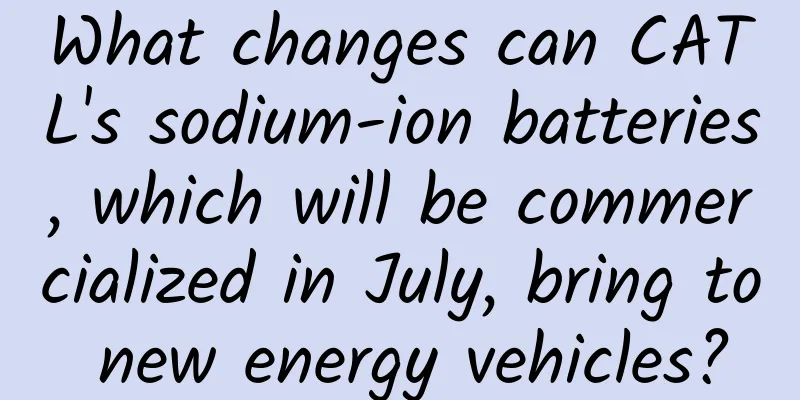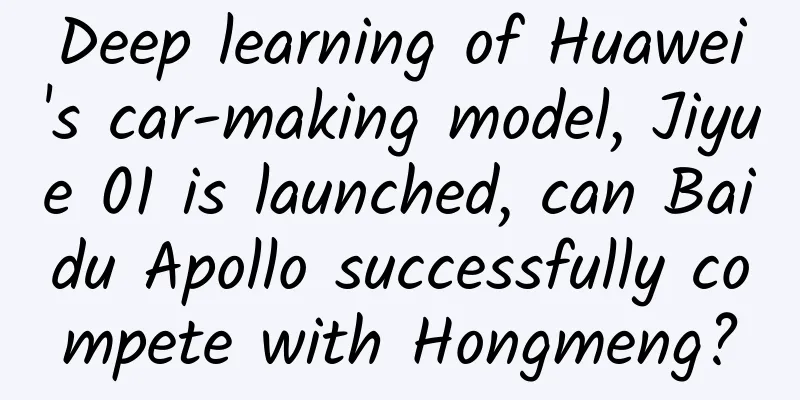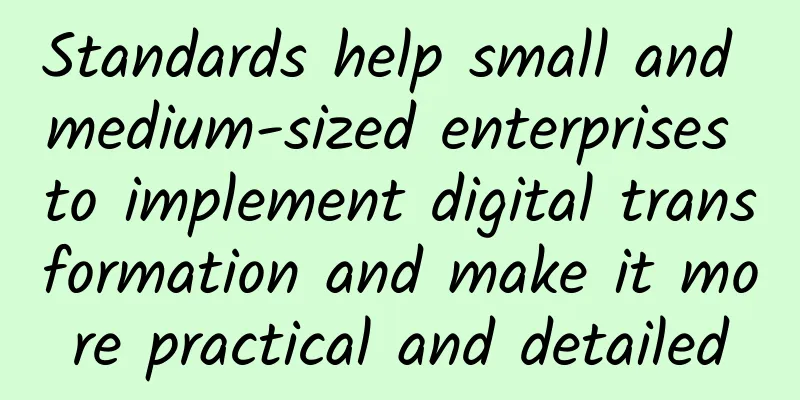What changes can CATL's sodium-ion batteries, which will be commercialized in July, bring to new energy vehicles?

|
In the field of new energy vehicles, China's extremely high automobile sales have enabled it to overtake developed countries in Europe and the United States. According to the China Association of Automobile Manufacturers, my country's new energy vehicle sales in 2020 totaled 1.367 million, a year-on-year increase of 10.9%, more than four times the sales in the United States. Today, China's new energy vehicle sales account for 40.7% of global new energy vehicle sales. Compared with other countries, the sales volume is "unrivaled". This is due to the unremitting efforts of Chinese new energy vehicle companies and the promotion of our country's policy subsidies for new energy vehicles. The lower price than fuel vehicles makes new energy vehicles the reason why consumers prefer them when buying cars. However, since the beginning of this year, the prices of most new energy vehicles have shown a puzzling phenomenon of "rising instead of falling", so the price advantage has been greatly weakened compared with before, which will inevitably lead to a slowdown in the popularization of new energy vehicles. So what exactly are the factors that cause the price increase of new energy vehicles, and how to solve it? Battery costs hinder the popularization of new energy vehicles In the early stage of market development, the National Development and Reform Commission specifically provided policy subsidies to promote the development of the new energy vehicle market. However, a large number of companies blindly invested in the new energy vehicle field, which eventually further reduced the capacity utilization rate of the entire automobile market and hindered the normal development of healthy companies. In order to curb this unhealthy trend, the National Development and Reform Commission proposed in the middle of last year that the subsidy standard for new energy vehicles will be reduced by 20% in 2021, and only companies with sales of new energy vehicles reaching 10,000 units can receive national subsidies. Although this policy is fast and effective in rectifying the phenomenon of blind investment in the new energy field, it has also objectively led to a certain decline in the competitiveness of new energy vehicle prices. In addition, the soaring cost of batteries has further increased the prices of new energy vehicles. Industry data shows that the price of raw materials has risen sharply. Since January this year, the price of lithium carbonate, the core material of lithium batteries, has risen by 60% year-on-year, and the price of lithium iron phosphate has also risen by nearly 20%. According to the battery cost of CATL, the cost of raw materials in a battery accounts for 80% of the total cost, so it can be assumed that the price of batteries will rise by the same amount as the price of raw materials. Not only the supply of raw materials for batteries, but also the production capacity of the production end cannot meet the rapidly rising demand. Blue Lithium, a well-known lithium battery cell manufacturer, previously announced that its annual production capacity of up to 400 million pieces is already in short supply, and said that the company is expanding its lithium battery production line. Its competitor CATL also recently stated that the company's battery production capacity is difficult to keep up with customer demand, but it takes a long time to expand production capacity, so it is impossible to supply in time, and it has also been co-building lithium battery production lines with some downstream companies. The rising prices of battery raw materials are mainly due to the "supply mismatch" factor, according to the lithium element production capacity data. However, the production capacity problem is a real production problem. Compared with other components, the expansion of battery production lines is more difficult. Safety approval, introduction of production equipment, etc. are all stumbling blocks that affect the progress of expansion. Ultimately, under the state of "supply is less than demand", battery production capacity has become another factor that raises the price of batteries. Currently, in new energy vehicles, battery costs account for about 30%-40% of the vehicle's BOM cost. After the price of batteries has risen due to rising raw material prices and insufficient battery production capacity, car companies at the downstream end of the industry supply chain will inevitably transfer this part of the additional cost to the product price. After the reduction of new energy subsidy policies led to an increase in the selling price of end products, the biggest price advantage of new energy vehicles compared to traditional fuel vehicles has almost disappeared, and the long-standing shortcomings such as slow charging and high maintenance costs have been magnified again. If this continues, it will be extremely unfavorable for the development of new energy vehicles. Low-cost sodium-ion batteries may turn the tide As lithium batteries face sharp price increases due to supply issues, battery manufacturers are also actively seeking countermeasures. At the CATL 2020 shareholders' meeting not long ago, CATL Chairman Zeng Yuqun threw out a rather shocking "easter egg". He said that CATL will launch the world's first commercially available sodium-ion battery in July. Although sodium-ion batteries have not been well known to the public in the consumer field, research related to them has been carried out for many years. Currently, many Chinese companies including CATL, Sacred Sun Technology and China National Salt Chemical Corporation have many years of R&D experience in the field of sodium-ion batteries. Compared with lithium batteries, sodium-ion batteries have many technical advantages. The first is safety. The thermal runaway temperature of sodium-ion batteries is higher than that of lithium batteries, and the time it takes for chemical reactions to occur in direct contact with water is also quite slow. And some researchers have said that although sodium-ion batteries cannot be overcharged like lithium batteries, they can be over-discharged, making them safer in long-term storage. In terms of raw materials, sodium resources are very abundant. To make the cathode of sodium-ion batteries, you only need to use ordinary edible salt. In 2019 alone, my country's salt production has reached 60 million tons; the anode only needs to be made of wood and other raw materials, and the content of sodium in the earth's crust is 1,000 times higher than that of lithium. The extremely abundant raw materials make it difficult for the raw material cost of sodium-ion batteries to be affected by the market supply and demand effect, resulting in drastic price fluctuations. Therefore, on the supply side, the raw material cost of sodium-ion batteries is very stable. Because of the abundance of raw materials, the cost of sodium-ion batteries after large-scale commercialization is much lower than that of lithium batteries. Data shows that the cost of sodium-ion batteries after large-scale production is only 0.2-0.3 yuan/WH, while the cost of lithium batteries that have already achieved large-scale production is as high as 0.5-0.7 yuan/WH, and the price will fluctuate significantly with market supply. Therefore, in terms of cost, sodium-ion batteries will be a very affordable alternative. Because battery costs account for a high proportion of the vehicle's BOM costs, it is foreseeable that once sodium-ion batteries are commercialized on a large scale, the prices of new energy vehicles will usher in a new round of price cuts. According to the fact that Tesla's domestically produced Model Y, which was 165,100 yuan cheaper than the imported version, went on sale a year ago, and received 100,000 orders in less than 12 hours, the new round of price cuts will further promote the popularity of new energy vehicles. At the same time, the high safety of sodium-ion batteries will also become an opportunity for new energy vehicle manufacturers to reverse the unsafe image of batteries in the minds of consumers, which is very beneficial to creating an industry image that is not only green and environmentally friendly, but also safer. Of course, in the short term, sodium-ion batteries also have some shortcomings that need to be improved. Since the charge carrying capacity of sodium is weaker than that of lithium, the energy density of sodium-ion batteries currently in the research stage is generally 120Wh/kg, which is much lower than the 160Wh/kg of lithium batteries. This makes it impossible to provide a long enough battery life for the car. However, the latest research report from the Helmholtz Research Center in Germany stated that they believe that using ultra-thin carbon material double-layer graphene (nanocarbon) as battery anode will effectively improve this problem, so it is only a matter of time before sodium-ion batteries mature. Overall, lithium batteries, whose prices are greatly affected by supply, will pose a major obstacle to the popularization of new energy vehicles. However, sodium-ion batteries, on the other hand, have obvious advantages in stability and low cost due to abundant reserves of raw materials. This is very friendly to the risk control of automobile companies, and will also allow more consumers to more easily choose new energy vehicles with price advantages when buying cars, which will provide a strong boost to the popularization of new energy vehicles in the mass market. As a winner of Toutiao's Qingyun Plan and Baijiahao's Bai+ Plan, the 2019 Baidu Digital Author of the Year, the Baijiahao's Most Popular Author in the Technology Field, the 2019 Sogou Technology and Culture Author, and the 2021 Baijiahao Quarterly Influential Creator, he has won many awards, including the 2013 Sohu Best Industry Media Person, the 2015 China New Media Entrepreneurship Competition Beijing Third Place, the 2015 Guangmang Experience Award, the 2015 China New Media Entrepreneurship Competition Finals Third Place, and the 2018 Baidu Dynamic Annual Powerful Celebrity. |
<<: The price was cut in half in just one month. Has the Bitcoin bubble really burst?
Recommend
Consumer Reports: Tesla ranks last in 2021 car reliability report
The electric car market is full of waves. First, ...
The development process of WeChat Mini Programs in Guangzhou. How are WeChat Mini Programs developed?
WeChat Mini Programs are favored by many companie...
GSX CTO Li Gangjiang: How startups build excellent technical teams
Once upon a time, you had the idea of starting ...
Analysis of Tmall Double 11 event operations in 2019!
This article attempts to analyze the overall game...
Mountain floods in Datong County, Qinghai Province triggered mudslides. Why is the “last mile” forecast and rescue still a problem?
Heavy rainfall in Datong County, Qinghai Province...
Search promotion strategy for the tourism industry!
1. Industry Overview In the past, travel was a sy...
What are the elements for configuring BGP line server for gaming website?
There are many server requirements for game websi...
Shenzhen Distribution Mini Program Mall, how long does it take to produce a distribution mini program?
As of now, the number of mini programs has reache...
When developing an app, what does a product manager need to do from beginning to end? -- Before the project starts
[[163676]] I have been working in product managem...
After a big warming, the temperature plummeted, and the cold wave entered an "elusive" mode. Will this year still be a warm winter?
Recently, heavy snow suddenly hit North China, wi...
JD.com’s private traffic strategy: Jingxi + WeChat + couriers
"People are there, goods are there" e-c...
"Lunar Shield", Earth-Moon Live Broadcast... The Secrets of "Alone on the Moon"
On July 29, the sci-fi comedy "Alone on the ...
The flower market has many tricks, let’s fight against counterfeiting together!
Among all major commodity categories, flowers and...
Check out the three common explosive points of “screen-sweeping” marketing!
The author reviewed and sorted out nine marketing...
How to carry out new media work?
The so-called new media operation , simply put, i...









